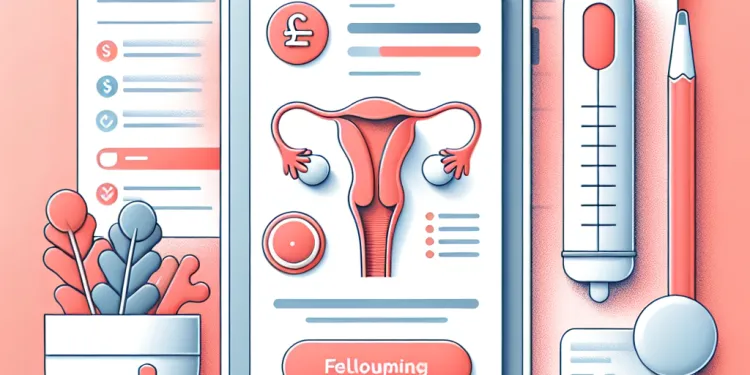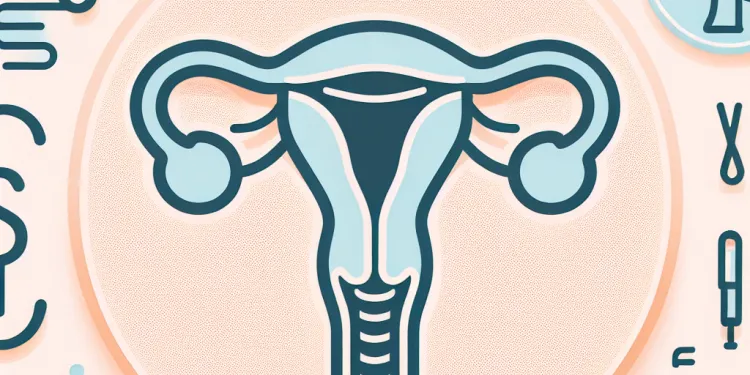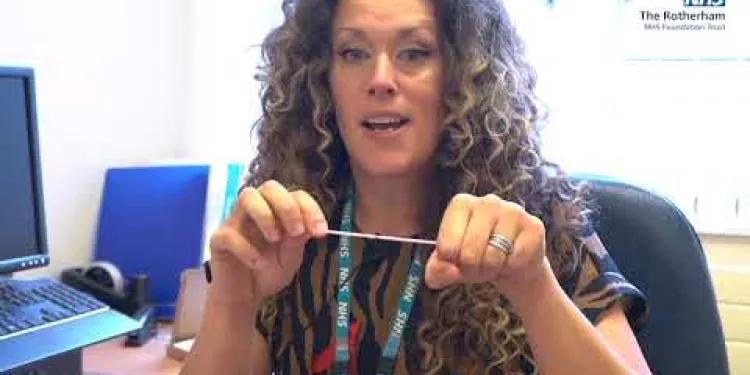
Find Help
More Items From Ergsy search
-

What is the womb lining test?
Relevance: 100%
-

What is the Womb Lining test?
Relevance: 98%
-

Is a womb lining test painful?
Relevance: 98%
-

Is the womb lining test covered by the NHS?
Relevance: 97%
-

Why is a womb lining test performed?
Relevance: 97%
-

Is the womb lining test covered by the NHS?
Relevance: 96%
-

Is the womb lining test painful?
Relevance: 95%
-

How is a womb lining test conducted?
Relevance: 94%
-

Can a womb lining test detect cancer?
Relevance: 93%
-

Are there risks associated with a womb lining test?
Relevance: 92%
-

Can a womb lining test detect cancer?
Relevance: 92%
-

How is the womb lining test performed?
Relevance: 91%
-

Are there any risks associated with the womb lining test?
Relevance: 91%
-

Why might someone need a womb lining test?
Relevance: 90%
-

Can I drive after the womb lining test?
Relevance: 87%
-

What happens after a womb lining test?
Relevance: 87%
-

How should I prepare for a womb lining test?
Relevance: 84%
-

Is there any follow-up required after a womb lining test?
Relevance: 83%
-

How long does it take to get results from a womb lining test?
Relevance: 81%
-

Does the womb lining test require any special preparation?
Relevance: 81%
-

How long does it take to get results from a womb lining test?
Relevance: 80%
-

What does an evaporation line mean on a pregnancy test?
Relevance: 51%
-

What is a lot line adjustment?
Relevance: 35%
-

Are digital pregnancy tests more accurate than non-digital tests?
Relevance: 34%
-

How does a pregnancy test work?
Relevance: 33%
-

What is a pregnancy test?
Relevance: 32%
-

What should I do if I get unclear results on a pregnancy test?
Relevance: 30%
-

When should I take a pregnancy test?
Relevance: 29%
-

What can cause a false positive pregnancy test?
Relevance: 28%
-

How long should I wait to read the results of a pregnancy test?
Relevance: 27%
-

Can a pregnancy test expire?
Relevance: 27%
-

What are the different types of pregnancy tests?
Relevance: 27%
-

What if my pregnancy test is positive?
Relevance: 26%
-

Can a pregnancy test detect a miscarriage?
Relevance: 26%
-

Rectal swab test for Gonorrhoea and Chlamydia
Relevance: 25%
-

Can drinking a lot of water affect pregnancy test results?
Relevance: 24%
-

Do all pregnancy tests detect the same levels of hCG?
Relevance: 24%
-

Is there an autism test?
Relevance: 24%
-

What is a stool DNA test?
Relevance: 24%
-

How soon can a pregnancy test detect pregnancy?
Relevance: 24%
What Happens After a Womb Lining Test?
Understanding the Results
After undergoing a womb lining test, often called an endometrial biopsy, the next step involves waiting for the results, which typically take a few days to two weeks. In the UK, these results are usually discussed in a follow-up appointment with your healthcare provider. The biopsy aims to assess the health of the endometrial tissue and can help diagnose conditions such as endometrial hyperplasia, cancer, or causes of abnormal bleeding.Post-Test Symptoms
It's common to experience some discomfort after the procedure, such as cramping, spotting, or light bleeding for a few days. Over-the-counter pain relief like ibuprofen or paracetamol can help manage any pain, but it is crucial to follow the specific advice given by your doctor. If you experience heavy bleeding, severe pain, fever, or signs of infection, you should contact your healthcare provider promptly.Addressing Diagnosis and Treatment Plans
Based on the biopsy results, your doctor will discuss potential diagnosis and treatment options. If any abnormalities were detected, like precancerous cells or cancer, your doctor will outline the next steps, which might include additional testing, further monitoring, medication, or surgery. In many cases, if the test results indicate conditions such as endometrial hyperplasia, hormone therapy or minor surgical procedures may be recommended.Emotional and Psychological Support
Receiving results, especially if they indicate a problem, can be emotionally taxing. In the UK, it's important to know that support services are available. Charities such as Macmillan Cancer Support offer resources and counselling services for those dealing with a cancer diagnosis. Talking with family, friends, or professional counsellors can also help manage any anxiety or stress.Follow-Up Care
In the UK, follow-up care will often involve regular check-ups to monitor your condition or the effectiveness of any treatment. Attending all scheduled appointments and adhering to the advice of your healthcare provider are vital for effective management and care. Frequent communication with your doctor ensures you're informed about your health status and any changes in your treatment plan. This pathway after a womb lining test is designed to ensure any issues are identified and managed effectively, benefiting patient health and peace of mind.What Happens After a Womb Lining Test?
Understanding the Results
After you have a womb lining test, called an endometrial biopsy, you will wait for the results. This can take from a few days to two weeks. In the UK, you talk about the results with your doctor in another appointment. The test looks at the health of the womb lining. It can find out if there are problems like too much growth of cells, cancer, or why there is unusual bleeding.Post-Test Symptoms
It is normal to feel some aching after the test. You might have cramps, spotting, or light bleeding for a few days. You can take pain relievers like ibuprofen or paracetamol, but always follow your doctor's advice. If you have very heavy bleeding, strong pain, fever, or signs of infection, contact your doctor right away.Addressing Diagnosis and Treatment Plans
Your doctor will talk to you about what the test shows. If there are any problems, like cells that could turn into cancer, your doctor will explain what to do next. This might involve more tests, checking regularly, taking medication, or having an operation. If the test shows conditions like too much cell growth, treatment might include hormone therapy or small surgeries.Emotional and Psychological Support
Getting test results can make you feel worried, especially if there is a problem. In the UK, there are places that offer help. Charities like Macmillan Cancer Support can provide information and counselling for people who have cancer. Talking to family, friends, or professional counsellors can also help you feel better and manage stress.Follow-Up Care
In the UK, follow-up care includes regular check-ups with your doctor to see how you are doing and how treatments are working. Going to all your appointments and listening to your doctor’s advice is very important. This way, you stay informed about your health and any changes needed in your treatment. The steps after a womb lining test help find and treat any issues. This aims to improve your health and make you feel more at ease.Frequently Asked Questions
What is a womb lining test?
A womb lining test, also known as an endometrial biopsy, is a procedure where a small sample of the womb's lining is taken for examination.
Why would I need a womb lining test?
This test is often conducted to investigate abnormal uterine bleeding, assess the lining for potential issues, or investigate the cause of infertility.
How is the sample from a womb lining test analysed?
The sample is sent to a laboratory where it is examined under a microscope by a pathologist to check for abnormalities.
How long does it take to get the results of a womb lining test?
It usually takes about one to two weeks to get the results, but this can vary depending on the hospital or clinic.
What should I expect to feel after the procedure?
You might experience some cramping or slight bleeding after the procedure, which is normal and should subside within a few days.
Can I resume normal activities after a womb lining test?
You should be able to resume normal activities shortly after the procedure, but it's advisable to avoid strenuous exercise for a day or two.
What happens if the test results are normal?
If the results are normal, your doctor may explore other causes for your symptoms or assure you that the lining is healthy.
What are the potential abnormalities that could be found?
Results could reveal conditions like endometritis, hyperplasia, or cancerous changes in the uterine lining.
What if the results show an abnormality?
Your doctor will discuss the findings with you and recommend further tests or treatments based on the specific condition diagnosed.
Will I need any follow-up appointments after the test?
Yes, a follow-up appointment is usually scheduled to discuss the results and next steps, regardless of the outcome.
Are there any risks associated with a womb lining test?
The procedure is generally safe, but there are minor risks, including infection or excessive bleeding. Contact medical services if you experience severe symptoms.
Can the procedure affect my menstrual cycle?
The procedure might cause a temporary change in your menstrual cycle, such as spotting or an earlier period, but it should not cause long-term changes.
What should I do if I experience severe pain or heavy bleeding after the test?
Contact your healthcare provider immediately or seek medical attention if you experience severe pain, heavy bleeding, or signs of infection like fever.
Is sexual activity safe after a womb lining test?
It's typically advised to avoid sexual activity for a couple of days after the procedure to allow healing and reduce the risk of infection.
How should I prepare for my follow-up appointment?
It helps to write down any questions or concerns you have about your results or symptoms to discuss with your healthcare provider at your follow-up appointment.
What is a womb lining test?
A womb lining test is a way for doctors to check inside a woman's tummy. They look at the soft part where a baby can grow. This is to make sure everything is okay.
If you want to learn more, you can ask a doctor to explain. You can also use pictures or videos to help you understand. A friend or family member can help you too!
A womb lining test is also called an endometrial biopsy. This is when a doctor takes a tiny piece from the inside of the womb to look at it carefully.
Why do I need a test for my womb lining?
You might need this test to see how healthy your womb lining is. The womb lining is the soft inside part of a woman's womb. The test helps doctors check if everything is okay. It can be helpful if you have problems like heavy periods or trouble getting pregnant.
To understand better, you can:
- Ask your doctor to explain it in simple words.
- Use pictures to see what the womb looks like.
- Talk to someone you trust who can help explain it to you.
This test helps doctors find out why someone is bleeding from the womb when they shouldn't be. It also checks if the womb lining has any problems or why someone can't have a baby.
How do doctors check a sample from the womb lining?
The sample is sent to a lab. A scientist looks at it under a microscope. They check to see if anything is wrong.
When will I get the results from a womb lining test?
After your womb lining test, you will have to wait for the results.
It can take a few days or weeks to get them.
Ask your doctor when to expect them.
It can help to:
- Write the date you had the test.
- Mark the date on a calendar when you might get the results.
- Ask a friend or family member to remind you.
You usually have to wait 1 to 2 weeks to get the test results. Sometimes it might be quicker or slower, depending on the hospital or clinic.
How will I feel after the procedure?
After the procedure, you might feel tired or a bit sore. This is normal. You should rest and drink plenty of water.
- Take it easy and relax.
- Ask someone to help you if needed.
- You might feel better after a nap.
If you feel worried or in pain, tell someone who can help.
After the procedure, you might feel some cramps or see a little bleeding. This is normal. It should stop in a few days.
Can I go back to my usual activities after a womb lining test?
You can go back to doing your normal things soon after. It is best not to do hard exercise for a day or two.
What if the test results are okay?
If the results are normal, your doctor might look for other reasons why you feel unwell. They might also tell you that everything is okay inside your body.
What problems might we find?
The test results might show problems like an infection inside the womb, extra thick lining, or changes that can lead to cancer.
What happens if the results are not normal?
If the doctor finds something that is not normal, they will talk to you about it. Here is what you can do:
- Ask the doctor to explain what it means. It is okay to ask questions.
- You can take notes or ask someone to help you understand.
- If you feel worried, tell the doctor or nurse.
- Sometimes, you might need more tests. The doctor will tell you why.
- It is important to follow the doctor’s advice to stay healthy.
- You can use tools like picture cards or videos to help you understand better.
Your doctor will talk to you about what they found. They will tell you if you need more tests or treatments to help you get better.
Do I need to see the doctor again after the test?
After your test, you might need to go back to see the doctor. The doctor will tell you if you need to do this. They will check how you are doing and talk about what to do next.
If you find it hard to remember things, you can:
- Ask the doctor to write down what they say.
- Bring a friend or family member with you to the appointment.
- Use a calendar or notebook to keep track of your appointments.
Yes, you will usually have another meeting with the doctor to talk about what the tests showed and what to do next, no matter what the results are.
Is there anything that could go wrong with a womb lining test?
The procedure is usually safe. But sometimes small problems can happen. These problems might be an infection or too much bleeding. If you feel very sick, call a doctor or nurse for help.
Will the procedure change my period?
The procedure might make your period come a little different. You might see some light bleeding, or your period could come early. But it will not change your period for a long time.
What should I do if I have bad pain or a lot of bleeding after the test?
If you have strong pain or see a lot of blood after the test, you should:
1. Tell an adult you trust, like a family member.
2. Call your doctor or nurse right away. They can help you.
3. If you can't reach the doctor, you might need to go to the hospital.
You can use things like:
- Having a phone with important numbers saved.
- Keeping a note of what happened, like a diary.
- Asking someone to help you make the call if you are worried.
Call your doctor or go to the hospital right away if you have really bad pain, a lot of bleeding, or feel sick with a high temperature.
To help you remember, you can set an alarm on your phone.
Sometimes, writing things down or asking someone you trust for help can make it easier.
Can I have sex after a womb lining test?
If you had a test to check the inside of your womb (where babies grow), it's normal to have questions.
Here’s what you can do:
- Ask your doctor when it is safe to have sex again. They can give you the best advice.
- Wait until you feel good and ready; sometimes, it's nice to wait until any soreness goes away.
- If you don't feel well, it's important to tell a grown-up you trust.
Tools that might help:
- If you have a friend or family member with you at the doctor, they can help ask questions.
- You can use a calendar or phone reminders to remember doctor's advice.
- Talking to someone you trust about how you feel can be helpful.
After the treatment, it's a good idea to wait a few days before having sex. This helps your body heal and stops you from getting an infection.
Getting Ready for Your Next Doctor's Visit
Here is how you can get ready for your next visit to the doctor:
- Bring a list of your medicines.
- Write down any questions you want to ask the doctor.
- Ask a friend or family member to go with you if you want support.
- Use a notebook or phone to take notes during the visit.
- Remember to ask the doctor if you do not understand something.
Before you see your doctor, write down any questions or worries you have about your test results or how you feel. This way, you can talk to your doctor about them when you have your next appointment.
Useful Links
- Ergsy carfully checks the information in the videos we provide here.
- Videos shown by Youtube after a video has completed, have NOT been reviewed by ERGSY.
- To view, click the arrow in centre of video.
- Most of the videos you find here will have subtitles and/or closed captions available.
- You may need to turn these on, and choose your preferred language.
- Go to the video you'd like to watch.
- If closed captions (CC) are available, settings will be visible on the bottom right of the video player.
- To turn on Captions, click settings .
- To turn off Captions, click settings again.
More Items From Ergsy search
-

What is the womb lining test?
Relevance: 100%
-

What is the Womb Lining test?
Relevance: 98%
-

Is a womb lining test painful?
Relevance: 98%
-

Is the womb lining test covered by the NHS?
Relevance: 97%
-

Why is a womb lining test performed?
Relevance: 97%
-

Is the womb lining test covered by the NHS?
Relevance: 96%
-

Is the womb lining test painful?
Relevance: 95%
-

How is a womb lining test conducted?
Relevance: 94%
-

Can a womb lining test detect cancer?
Relevance: 93%
-

Are there risks associated with a womb lining test?
Relevance: 92%
-

Can a womb lining test detect cancer?
Relevance: 92%
-

How is the womb lining test performed?
Relevance: 91%
-

Are there any risks associated with the womb lining test?
Relevance: 91%
-

Why might someone need a womb lining test?
Relevance: 90%
-

Can I drive after the womb lining test?
Relevance: 87%
-

What happens after a womb lining test?
Relevance: 87%
-

How should I prepare for a womb lining test?
Relevance: 84%
-

Is there any follow-up required after a womb lining test?
Relevance: 83%
-

How long does it take to get results from a womb lining test?
Relevance: 81%
-

Does the womb lining test require any special preparation?
Relevance: 81%
-

How long does it take to get results from a womb lining test?
Relevance: 80%
-

What does an evaporation line mean on a pregnancy test?
Relevance: 51%
-

What is a lot line adjustment?
Relevance: 35%
-

Are digital pregnancy tests more accurate than non-digital tests?
Relevance: 34%
-

How does a pregnancy test work?
Relevance: 33%
-

What is a pregnancy test?
Relevance: 32%
-

What should I do if I get unclear results on a pregnancy test?
Relevance: 30%
-

When should I take a pregnancy test?
Relevance: 29%
-

What can cause a false positive pregnancy test?
Relevance: 28%
-

How long should I wait to read the results of a pregnancy test?
Relevance: 27%
-

Can a pregnancy test expire?
Relevance: 27%
-

What are the different types of pregnancy tests?
Relevance: 27%
-

What if my pregnancy test is positive?
Relevance: 26%
-

Can a pregnancy test detect a miscarriage?
Relevance: 26%
-

Rectal swab test for Gonorrhoea and Chlamydia
Relevance: 25%
-

Can drinking a lot of water affect pregnancy test results?
Relevance: 24%
-

Do all pregnancy tests detect the same levels of hCG?
Relevance: 24%
-

Is there an autism test?
Relevance: 24%
-

What is a stool DNA test?
Relevance: 24%
-

How soon can a pregnancy test detect pregnancy?
Relevance: 24%


